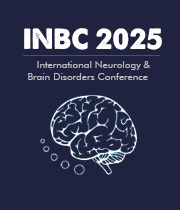Title : Categorising malarial and non-malarial causes of coma in children admitted to queen Elizabeth central hospital in Malawi
Abstract:
Background and aim: Fever with coma is common in African children. While cerebral malaria (CM) is the leading cause of coma, etiological stratification of malaria and non-malarial coma is suboptimal. Standard diagnostic tests for CM (microscopy or mRDT) are not available in resource-limited settings; and may yield discordant results due to the long invivo half-life of histidine-rich protein-2 (HRP2) in areas with high asymptomatic malaria prevalence or low parasitemia. We propose a prediction score for enhanced diagnosis of CM in resource-limited settings using readily available clinical features.
Methodology: This study recruited 429 children (<14 years old) presenting with febrile coma at Queen Elizabeth Central Hospital in Blantyre, Malawi between February 2018 and December 2020. All the eligible children had malaria microscopy and mRDT results. Plasma samples were evaluated for quantitative HRP2 levels using an ELISA assay.
Results: In total, 73 were non-malarial cases, 224 were confirmed CM, and 132 had discordant results (negative for malaria on microscopy, yet positive by mRDT). Consistent with previous studies, children with confirmed CM exhibited higher HRP2 levels than non-malarial cases; whilst discordant cases had a heterogenous distribution of HRP2 suggesting asymptomatic parasitemia, historic malarial infection or non-malaria causes of coma. Using a machine-learning approach, we developed a prediction model that highlighted platelets, retinopathy status and fever duration as strong predictors of CM with an accuracy of 92%, specificity of 75% and sensitivity of 97%.
Conclusion: These findings highlight the potential of HRP2 biomarker to resolve discordant results dilemma; and the importance of routinely collected clinical data for cost-effective and rapid prediction of CM in resource-limited settings.
Keywords: HRP2, Cerebral malaria, non-malarial coma, ELISA.



